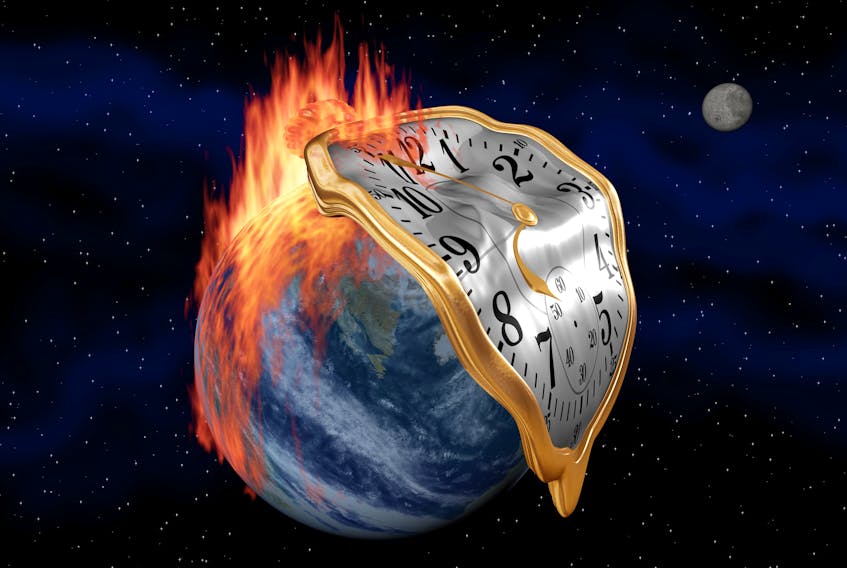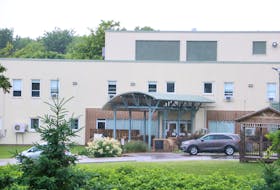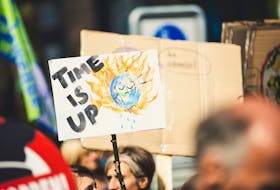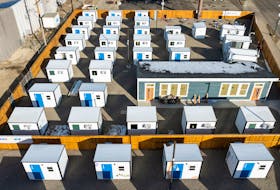I am 64 years old and may live to see global collapse. I am not a “stable genius” but am not crazy and am of average intelligence.
This outrageous sounding claim comes from 35 years of reviewing scores of risk assessments and related queries and studying reports from most of the major industrial disasters of the past 40 years. I also worked on the Ocean Ranger and have a terrible feeling of déjà vu.
I believe all the indicators point to global disaster from climate change much sooner than 2100.
This is the warmest the Earth has been in 125,000 years, when it was one or two degrees C warmer (David L Chandler, NewScientist, 2007) and sea levels were high enough to inundate most of today’s coastal cities.
That’s not the bad news.
The bad news is “In the past century alone, the temperature has climbed 0.9 degrees Celsius, roughly 10 times faster than the average rate of ice-age-recovery warming” (NASA) and if the trend continues will be rising 10 times faster than at any time in the past 65 million years (Scientific American); atmospheric CO2 is at its highest level in 15 million years and the rate of increase is 100 times faster than at the end of the last ice age (World Metrological Organization) I could go on about accelerating amounts of ice melt, sea level rise, permafrost loss, deforestation, etc. but the point is that all the indicator curves are accelerating toward straight up, asymptotic. In industry, if you ignore leading indicators, like these, you have a major disaster.
The parallels between the disasters I have studied and climate change are frightening. Imagine the Bhopal or Chernobyl disasters on a global scale. To have a major industrial disaster you need sufficient energy to destroy an entire facility, a significant part thereof and/or the surrounding area. Humans have in the last 60 years acquired control of sufficient energy to destroy the world, so a human-made disaster can for the first time in history be global — either quickly via a nuclear exchange (even a very limited exchange will destroy the planet) or more slowly by emitting greenhouse gases.
The two are not unrelated, but more about that later.
The following are generally common to human made industrial disasters and, I submit, apply here: First, senior management (governments) ignore warning signs. Second, either the policies and procedures to prevent the disaster are inadequate and/or they are not followed (climate accords, etc.). Three, and key to my premise, there are major gaps and misunderstandings about the nature and interactions of the hazards and thus risk levels (feedback loops, tipping points, unknown factors). Four, there is a general level of stakeholder complacency (everyone). Finally, there is a weak regulatory structure (the UN, international agreements). What is happening on a global level with climate change is no different than what caused the losses of the Ocean Ranger, Piper Alpha, the Westray mine, Chernobyl, Deep Water Horizon, the Challenger, etc.
There is a highly technical axiom that applies that applies to timeframe, when things start to go to hell, they go to hell in a hurry. Indicators are accelerating rapidly and we have seen the first effects of climate change. In risk assessment one would logically, given so much uncertainty about so many variables and the potential consequences, make exceedingly conservative assumptions (S.H. Schneider, “Climate Change Policy”). Thus, one should assume that we could reach one or more of either the known or unknown tipping points in the next few years, followed by a cascading or domino effect that could destroy major components of global infrastructure and directly or indirectly cause massive loss of life. If this does not happen in the next 10 to 30 years, the strain placed on an already stressed geopolitical situation could lead one of the “stable geniuses”, who control nuclear weapons, to “press the button”.
I have outlined a recipe for disaster. However, we can alter any or all of the ingredients and thus greatly reduce the consequences of climate change. I specifically note complacency and apathy. I do have hope, else why write.
Without hope there is no action. But I warn, without action there will be no hope.
Peter Noel,
St. John’s
RELATED:









